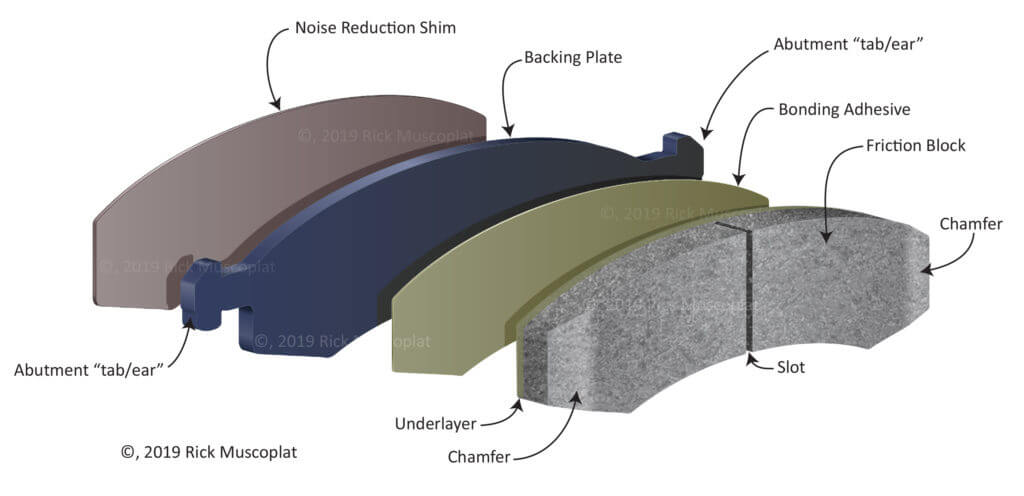Brake Pad Construction: How brake pads are made
Brake Pad Construction — Learn how brake pads are made
The brake pad is the single most important part of any car or truck braking system. Because even if the master cylinder, brake lines, caliper, and rotor are all in good shape if the brake pad is of inferior quality, you may not stop in time. This article takes a look at brake pad construction so you can understand the differences between a high quality brake pad and one made from inferior materials.
There is SO much more to this topic. This post is just a primer on brake pads. For more information see these other in-depth posts.
Brake pad quality levels. What’s the difference between economy and premium?
Brake pad backing plates—they’re even more important than the friction material
Brake pad backing plate types. Buying the right type can extend brake pad life.
Brake rotor quality—what’s the difference between economy and premium brake rotors?
Why brake pads fail. Yeah, there’s a reason you don’t get the expected life from brake pads.
Brake pad components
The image below shows the components of a bonded brake pad. A bonded pad is formed using an adhesive to attach the friction block to the steel backing plate.

Starting at the back: The Noise reduction shim
The shim acts as an insulating device to reduce the transfer of vibration and noise from the backing plate to the caliper. Learn more about brake pad shims here.
Brake Pad Backing plate
The backing plate is made from steel and is designed to apply even clamping pressure across the full length of the friction block, without flexing the plate itself. The backing plate must also resist the effects of corrosion and friction material separation.
There’s a huge difference in the quality of backing plates, from thin plates made from low-grade steel that rusts easily and debonds from the friction material to high-quality galvanized steel backing plates that incorporate a mechanical fastening system to hold the friction material.
Abutment tab, “T-head, “Ear”
The portion of the backing plate that is forced against a caliper bracket or steering knuckle to stop the brake pad from moving axially during a forward or reverse stop.
Bonding Adhesive
The adhesive is designed to hold the friction block to the steel backing plate under the most extreme conditions. For example, the adhesive must bond the friction material to the backing plate when a driver starts out at -20°F and still hold the friction material when the driver slams on the brakes a few block into their drive, which causes the brake pad to heat up to almost 400°F in just a few seconds. The adhesive must remain active in those temperature extremes AND handle the differences in expansion/contraction rates between the steel, adhesive and friction material.
Underlayer
All friction blocks contain a binding resin to hold the raw materials together. But the underlayer has a much higher percentage of the resin to help bond the friction block to the steel backing plate. As the brake pad material wears down to the underlayer, the brake pad provides less stopping power. Some brake pads are equipped with a brake pad sensor (also called a squealer) that scrapes against the brake rotor to alert the driver that the brake pads have worn down to the underlayer level (2-3mm high) and must be replaced.
Friction block
The friction block is what provides the braking. It is built with a combination of powders, fibers, lubricants, and abrasives and is held together with a binder resin.
Chamfers
The angled cut on the leading and trailing edge of the friction block reduces noise, compensates for backing plate flex, and assists in the “bedding” process. Learn more about the different types of chamfers here.
Slots
Brake pad slots serve two functions: First, they change the natural frequency of the vibrations by separating one long portion of friction material into smaller sections. Next, they provide an exit pathway for gasses to escape, thereby preventing pad lift. Learn more about brake pad slots here.
©, 2019 Rick Muscoplat
Posted on by Rick Muscoplat